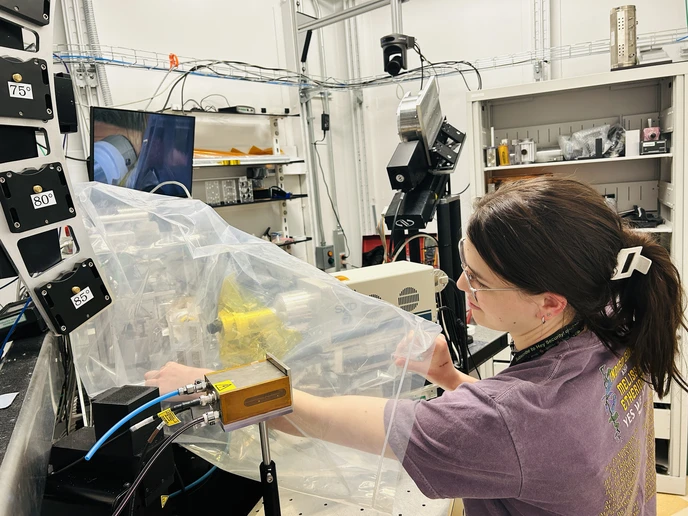

Isabelle Price places the sample holder with geological thin sections at the end station for synchrotron X-ray analysis.


Isabelle Price places the sample holder with geological thin sections at the end station for synchrotron X-ray analysis.
The Argonne National Laboratory was the research destination of senior Isabelle “Belle” Price and Dr. Wentao Cao.
Ms. Price, a senior Biochemistry major and Honors Program student from Rochester, NY, recently participated in research of Associate Professor Cao of the Department of Geology and Environmental Sciences that involved using the Advanced Photon Source (APS), a storage-ring-based high-energy X-ray light source facility, at the Illinois-based Argonne lab.
The team works with staff members of GSECARS (GeoSoilEnviro Center for Advanced Radiation Sources), a center within the University of Chicago that provides synchrotron X-ray capabilities, to analyze minerals. Synchrotron X-ray beams of micron-sizes are used to map and determine elemental concentration of elements of interest and their valence states.
“Isabelle fully participated in the analytical process, from sample loading, selection of analytical points, to post-analysis data processing,” Cao said.
The work, which was conducted Oct. 1 to 3, is part of Cao’s approved research proposal by the APS, with more beamtime available for the next two years. Interested students are encouraged to reach out to Cao to discuss future research opportunities.
The Department of Geology and Environmental Sciences Sue Mara Experiential Learning Fund, established through the Fredonia College Foundation, and the Department of Chemistry and Biochemistry provided generous travel support.
The APS, supported by the Office of Science in the U.S. Department of Energy, operates the world’s brightest synchrotron light source. GSECARS operates as an open, proposal-driven facility, funded primarily by the U.S. National Science Foundation’s Synchrotron Earth and Environmental Science (SEES) initiative, with supplementary support from the Department of Energy Geosciences and NASA Planetary Sciences.